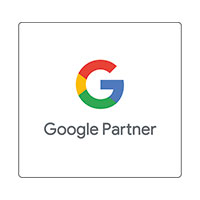It is that time of the year again for quiet reflection on 2017. To coincide with this we’ve been putting together a series of blog posts predicting what we think will change in digital marketing in 2018, including on email marketing
SEO has changed a lot in 2017, with all the events, talks and seminars being held on the subject it is very much an en-vogue area of improving an ecommerce business. No longer considered the “dark side” of digital marketing, organic optimisation is now more transparent and focuses not just on search optimisation, but on customer experience and website enhancement.
2018 will be no different with the
on-going development of multi-display platform technology, unique new ways to
search and high customer expectations, so brands will need to have a far higher
focus on optimisation moving into the New Year.
To continue the tradition of
successful predictions by the award-winning Infinity Nation SEO team (view
our 2017 roundup to see if our insights came true), read our list of the
most important developments in SEO we expect to emerge as key avenues in
successful organic optimisation for ecommerce sites.
Mobile First Indexing awareness is key for 2018
A subject we have touched on
numerous times over the 2017 period (read our round-ups of BrightonSEO
and SearchLove),
Mobile First Indexing will have a higher visibility and focus for 2018 as it
has been forecasted that the event is coming in early 2018.
If you are still in the dark about the event and haven’t had time to read our other articles, here is a quick recap – Mobile First is an evolution of the mobile indexing and pushes towards mobile friendly sites in the search results. First brought to the industries attention in April 2015 with the term coined as “mobilegeddon” it concerns creating mobile responsive sites (no over reliance on mobile specific platforms e.g. m. variants of URLs), ensuring synergy between desktop version and the mobile variant.
The end goal has always been to
make sure desktop and mobile are the same, with one site to rule them all and
have that dual function to ensure unity to customers no matter how they
interact with your site. However, what happened in reality is companies created
responsive versions of the site that would change based on the device they were
accessed from. This means that the desktop version and mobiles were still
different, however the site was responsive.
Google want companies to have one
site, which ensures the best experience for their customers, hence the final
push towards a mobile first index.
As explained previously Google will
start to disfavour websites in the search results that do not conform with
their criteria for mobile first indexing.
As most companies now have responsive
sites, you may think that your site is mobile first ready, however you still
may be at risk of this new mobile algorithm change.
3 quick ways to check if your
site is mobile first ready?
1. Does
your website have a high enough load speed on mobile? (above the fold loads in
1 sec)
2. Do
your desktop/mobile sites differ in link structures, information, content or
buttons?
3. Does
your mobile have substantially different text content to your desktop version?
If you answered yes to any of the above then you could be liable for a “mobile indexing penalty”.
Early 2018 we will have a more
detailed blog post on this particular topic, so keep an eye out for how to
ensure that your website is ready for the Mobile Indexing change.
Web security will become a massive concern for
SEOs
With all the recent data hacks,
such as Equifax and
the NHS making the news over 2017, it’s clear to see that websites need to bolster their data security as a breach could be detrimental to the business (both in terms of PR and revenue).
Customers are also a lot more digital
savvy, with the recent campaigns by high-street banks bringing attention to the
general population that checking if sites have a https URL can be a flag for
fraudulent sites.
Google have previously gone on record as far back as 2014 saying “Security is a top priority for Google. We invest a lot in making sure that our services use industry-leading security, like strong HTTPS encryption by default. That means that people using Search, Gmail and Google Drive, for example, automatically have a secure connection to Google”. This announcement resulted in a large amount of companies migrating to https (many times doing it wrong – classic signs of a bad migration) this was misinterpreted as a direct SEO benefit. It never was, it was more about ensuring that your website had a secure transactional element on the website if taking customers money/data.
Fast forward to 2017 – Google have been pushing security further in the background (for the reasons mentioned above), with a constant refining over the years especially within their own services (especially their own Chrome browser).
With the introduction of Chrome 62, the new browser upgrade, this signposts to the user pages from a website that are marked as “not secure” in the address bar for a site/webpage that does not have a SSL certificate. The company has also started to email webmasters if a site is not secure and warning them of this new change. This new push is a concerted effort from Google to move all websites onto https, although this time not directed towards SEO weighting (i.e. ranking positions) it’s clear to see that security is quickly becoming a top factor of contention for Google.
As of 2017, only 31.5% of the
top 100,000 websites across the globe use HTTPS as default, and 43.1% of the Internet’s 141,387 most popular websites use a secure implementation of HTTPS. If your site still isn’t secured now, then we highly suggest that you plan in a secure website change as soon as possible.
Although it is not a high weighting ranking factor (well, Google have not explicitly stated as of yet…), at minimum if your competitors have a secure site you should too, to ensure parity within the search results. Also if Google are starting to show visitors notification that your site is not secure this could push away customers as they may believe your site is not secure to use (especially with the recent campaigns and press coverage of security breaches), so less tech savvy customers may bounce off your site and visit a competitor site that does not have the notification.
However, do not take a change to secure lightly as this is still considered a migration (you are changing your domain from http – https therefore all your URLs change). If this is done incorrectly the results can be devastating and you will not only experience a drop off in traffic but could end up getting key traffic conversion pages deindexed which will affect your bottom line.
Rise of digital assistants
In our opinion 2018 is going to be the year of digital assistants. We’ve seen quite a few being introduced and optimised further in 2017 and now we’re predict that next year will see their continued rise as more people become accustomed to using them.
With major players Apple getting
into the race with their Homepod out early 2018 and, by proxy voice search,
digital assistants will also continue to increase as more people use them to
help out with their daily lives, such as using them to set timers or to even
order products online.
Companies are starting to pay
attention to this trend and it has been documented by many studies that by 2020
around 30-50% of people will be using voice activated search.
Ecommerce brands and digital
marketing agencies are going to need to invest substantial research, time and
effort into this key area of consumer buyer behaviour within their core
demographic target market to stay ahead of the pack and gain a competitive
advantage in an over saturated market.
SEO agencies and developers are
going to have to start thinking about this change in consumer
buying/information researching. The old days of agencies creating specific
keyword optimised content and meta data are long gone, it is now about the
customer journey and matching user intent.
This means that the focus on
building websites for optimisation purposes need to be tuned into this mind-set
as people tend to use voice search differently to how they have traditionally
used the process previously.
For example, people tend to use voice search by asking questions rather than typing in keywords. In the past people looking for a place to eat in London would type “best Italian restaurant in London”, whereas voice search queries would be “what is the best Italian restaurant that I can book tonight for dinner that is near the palladium theatre”. To optimise for that term would be impossible, as these question based terms are unique and detailed around more defined searcher intent rather than logical terms.
This means as marketers we need to
create content that is aligned around conversational searches, therefore the
way we create content, optimise our pages and the keyword research we do needs
to change. As detailed previously, keyword research now needs to a lot more
advanced and based on top/middle of funnel terms (mainly the types of terms
searchers are looking for especially on e-commerce sites).
For further information about voice
search read our whitepaper here,
where we cover in more depth how people use voice search, including delving
into how each age group interacts with voice search differently (25% of 16-24
year olds use voice search on mobile), as well as how to optimise your
ecommerce store to ensure that voice search will correctly interact with your
site.
The rise of Visual Search
Thanks to the rise of developments
across mobile-based technology lately such as improvements in mobile phones and
camera technology, the ways in which we search have evolved in ways that nobody
could have predicted even five years ago.
One of the ways that it has grown is to start incorporating visual search in new and unusual ways. Whilst SEO’s may have traditionally focussed on areas such as image optimisation and visual merchandising, there’s a growing trend (although in its infancy) involving using your smartphone to search for products by using your camera, such as using Bixby on your Samsung phone.
Although a new emerging search
technology, it is now possible to take a picture of a product while out and
about and you can get information on the product with details on where this can
be bought by using an app. This changes how consumers interact with the brand
and what touch points potential customers use before making a purchase.
Google have been working since at
least 2013 on optimising its visual search algorithms for its search engine
(related images, collections, images in web results, product details on images,
similar items, style ideas to name a few). Product discovery and defining user
intent is at the heart of the Google image search experience.
Social media sites have taken this
a step forward, sites such as Pinterest have launched a form of visual search known
as content-based image retrieval. For example, if you take a picture of
strawberries, Pinterest will attempt to marry up your searcher intent with your
picture and displays recipes involving strawberries. The technology is still in
its early stages at this moment, but we predict that visual search will be
further refined and start to be used a lot more over the next few years.
With 26% of all of the searches in
Google coming from image searches and the search results dominated with image
boxes for many types of search queries (informational/transnational) it is easy
to see why image based optimisation is key to a brands online growth.
For ecommerce businesses, it is key
that visual marketing is given high priority. It is essential that brands
invest in creating high-quality optimised images that showcase the product (not
just on a white background!) to ensure that customers are able to reach their
websites via whatever method they choose to use. In a recent study, it was
found that over 26%
of all searchers use some form of Google Image Search or Featured Image
boxes within the results to find your website, so this is an area that can no
longer be viewed as an SEO afterthought.
Multi-channel focus
SEO should never be used in
isolation. By under investing in other areas of your business or by cutting
back on other marketing channels any customer acquisition increase or revenue
growth will be slow or hampered. Therefore, SEO will never be the golden goose
on its own, there needs to be a multi-channel focus to make sure you are
getting the best from your SEO investment.
Digital marketers can no longer afford to treat all aspects of digital marketing as siloed enterprises that don’t affect each other, especially as we raised in our PPC insight blog with the first click/last click attribution model having to change to accommodate this.
There is a place for all core
digital marketing channels when looking at brand and company growth from its
online business activities as they all work in synergy (direct paid response
channels are a lot more flexible to create a unique brand message, email is
essential for retention and constant brand awareness).
For SEO what is more essential is
UX and CRO, which is not a traditional digital channel but is not only core for
SEO but also direct paid channels such as PPC, social paid and PR.
For example, your website could be enhanced from an optimisation point of view and could be driving 100% more traffic to the site over a 12-month period, but if the site is not giving the best user journey or lacks the ability to convert customers then all the investment in SEO will be for nothing. As SEO’s we will have done our work (i.e. driving more traffic) but if those visitors cannot convert the success of the investment would be put under scrutiny.
This is why in 2018 and beyond all
digital marketing channels will need to be working in synergy (even in
alignment with offline channels) to make sure brands are able to achieve the
growth aspirations to hit the targets set.
As with 2017 technical will continue to dominate
SEO
Mentioned in our 2017 predictions
and then reiterated in many blog posts over the past few months, technical SEO
is not going anywhere and it will still continue to dominate in 2018.
The main reason for this as its
been one of the most neglected areas of agency/in-house SEO over the past few
years, with many teams focusing on meta data, content marketing and creating
linkable assets. It is still one of the only areas of SEO that many teams do
not know what to do or even what to look for.
Over 90% of sites we have reviewed
in 2017 have had technical concerns, that other agencies or in-house teams
could not locate. These are not even deep surface problems many of them can be
found within a 30-minute audit.
If you are regular readers of the
blog or newsletters you will know that we pride ourselves on being a technical
and data focused agency.
The reason being is that there are
a number of wins that can be achieved relatively quickly by just making a
number of small technical fixes. Some of
these technical fixes can increase the visibility of a websites pages, ensuring
the site can rank higher for its optimised terms which in turn increases the
visits to the site which in turn will equal higher sales/revenue for the brand.
By making some basic level technical changes on one of our client’s websites at the start of 2017 we were able to increase their indexing rate, crawl efficiency and ranking positions for key pages which generated a 747%
ROI within months (which
recently won us an award for our SEO strategy).
As a recent example, we made technical enhancements to one of our new client’s websites around a key trading time for Q4 for a gifting brand which resulted in ranking increases for a number of seasonal based terms (one term is around 135,000 volume) which resulted in securing top 3 placements for a number of these Christmas based terms (previously the site dropped out of the rankings for these terms during the same period in 2016) as the key-terms are highly competitive around this time of year, mainly dominated by large high-street brands.
Structured data (like schema) although having been around for many years is being further developed and adopted by a lot more companies. This area of SEO will become even more important to ensure a higher click through rate for your companies’ snippet in the search results by benefiting from a larger search result real estate.
The Google Search Console is also expected to expand on the current available in Data Highlighter to help SEOs with this, giving SEOs the opportunity to back up experiments with data, as well as finding out what is working and what isn’t. This has been around for many years but if it becomes a lot more user friendly and integrated it will mean that a Schema effect can be created a lot easier than as it currently is (such as needing developer work to place code within source).
So that is it, there are our SEO
predictions for 2018. By reviewing the above, you can see that search engine
optimisation is constantly evolving, the way in which we search, the core SEO
fundamentals and principles evolving at a rapid pace.
To show how far we have come, out
of the trends identified above only technical remains part of the core
principles that SEO was built upon and even that has advanced far beyond
checking for 404 pages within the search results and internal crawl errors.
SEO is more advanced and needs to
now be a core part of a brands marketing strategy, with roots in technical to
be able to create a benefit driven data derived technical roadmap with web
developers, while continuing to be further integrated with other
digital/offline channels into a multi-channel customer acquisition strategy in
2018.
If you’ve got any questions after reading this article, or maybe you would like to delve further into what affect algorithm changes such as mobile first or security HTTPs preference for Google will have on your business or online visibility, then we’d love to hear from you. Drop us an email at chat@infinitynation.com or call 01793 238 697
DO YOU WANT TO PUSH YOUR DIGITAL GROWTH STRATEGY FORWARD? LET’S CHAT.
Interested in working with INFINITY NATION to create a successful digital experience for your company or product?
Get in touch to set up a meeting with our team.
















